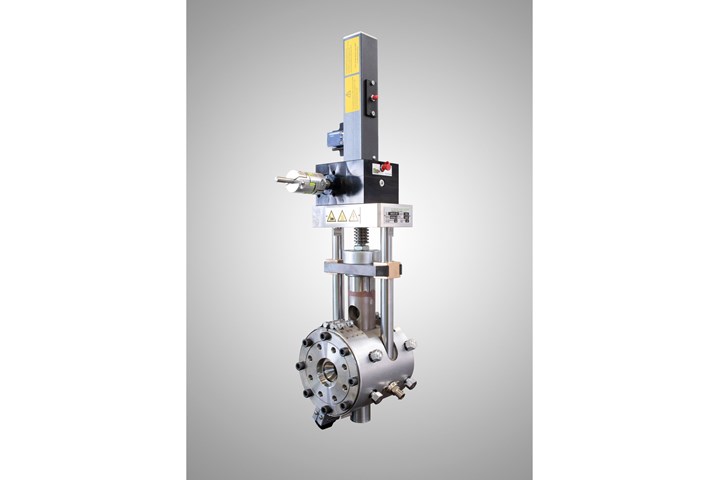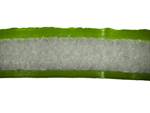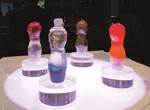Screen Changers for Extrusion Blow Molders
W. Muller is offering its own line of screen changers for vertical or horizontal blow molding extruders, suitable for retrofit.
A prominent supplier of extruders and extrusion heads for blow molding machines is now offering its own line of screen changers, too. According to Elijah Harris, marketing coordinator for W. Müller USA, “We began offering our own screen changers because a lot of our retrofit 大象传媒 involves vertically mounted extruders, for which there is no mass-market screen-changer solution available.” Harris adds that demand for screen changers is growing in step with increased use of post-consumer recycled (PCR) plastics, which are susceptible to contamination. “Our biggest customer, which fulfills huge projects for a major consumer-products company that require use of 100% PCR, uses screen changers on almost every machine.”

Harris cautions, “If you are only using virgin material, you don’t need a screen changer. But if a processor only has capability to use virgin materials, chances are they won’t be in 大象传媒 much longer.”
W. Müller offers five models of screen changers for vertical or horizontal extruders from 25 to 120 mm diam. with throughput capacities from 55-88 lb/hr to 572-880 lb/hr. They have a piston with two screen positions, open for replacing a dirty screen, and closed to return it to operation. The extruder cannot operate while the screen is in the open position. The piston can be driven manually, using a power tool, or with servo-electric or hydraulic power (via connection to the molding machine’s hydraulic system).
There is also a safety gate that can turn off the extruder, if needed, and connections for two burst discs, one melt-temperature sensor and two melt-pressure sensors. Harris notes that these sensors can give a machine operator “a lot of information about the effectiveness and health of their extruders.”
The screen changers are retrofittable on existing extruders. Harris notes that their short flow length provides low residence times and “vastly improved color-change times relative to existing offerings.”
Related Content
-
First Water Bottles With Ultrathin Glass Coating
Long used for sensitive juices and carbonated soft drinks, KHS Freshsafe PET Plasmax vapor-deposited glass coating is now providing freshness and flavor protection for PET mineral water bottles.
-
Blow Molder with a Mission: CKS Packaging Shares Gains Of Its Phenomenal Growth
From three machines in 1986 to 27 plants nationwide today, this family-owned processor has prospered through unwavering customer service, committed employees and dedicated service to its community.
-
Breaking News From NPE2024
Here is a firsthand report of news in injection molding, extrusion, blow molding and recycling not previously covered.






